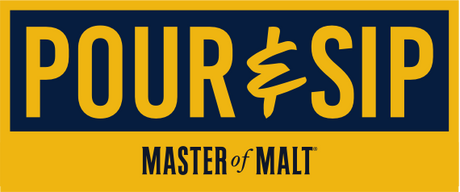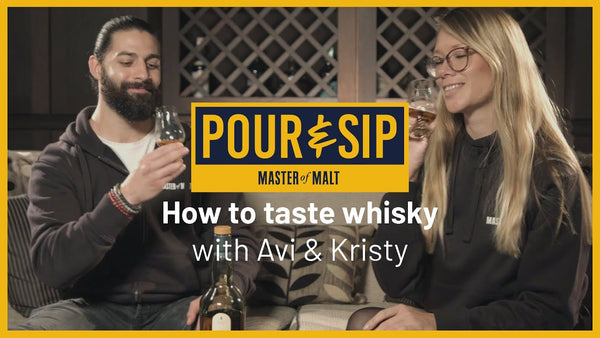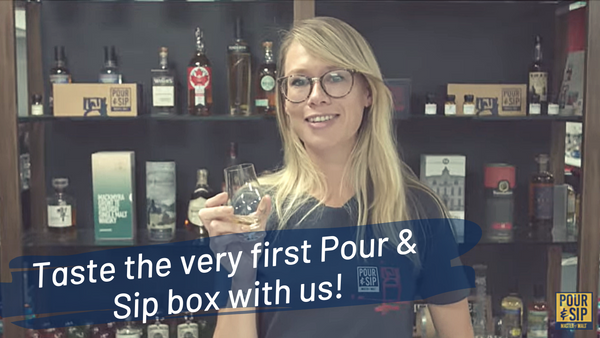The past, present, and future of FEW Spirits with founder Paul Hletko

Ready for a splash of history, a dash of creative inspiration, and a healthy dose of sarcasm? It’s all here in our latest Pour & Sip interview with Paul Hletko! Get your FEW Rye Whiskey out and have a read...
Pour & Sip: Hi, Paul! How did FEW Spirits come about – what’s its history?
Paul Hletko: I guess we start from the beginning. I’m Paul, I’m the founder and distiller at FEW Spirits. Part of the inspiration for it was the death of my grandfather. Prior to WWII, his family had owned a major brewery in what’s now the Czech Republic, and as I’m sure you’re aware, in 1939 the Nazis invaded – hopefully not a news flash to anybody in England – and they confiscated the brewery and murdered the entire family in the camps, except for my grandfather. After the war he spent the rest of his life trying to get the brewery back, but never did. When he died, it struck me that this family history and legacy would be gone forever unless I did something about it.
So FEW is an expression of trying to get back in touch with family legacy and family history. I talk about it frequently that FEW Spirits is art and that we definitely see ourselves as artists. This is how we also feed our families and pay our rent, but for me it’s pretty personal in that it’s family and it’s blood and it’s love. Obviously the rest of the team doesn’t have that same connection to my family, but that art, creativity and passion, that’s shared by literally every person on the team.
P&S: That is an amazing story! Considering the history, did you feel any pressure to succeed?
PH: I don’t know, I mean at the end of the day, at least I tried. I’m a very big fan of ‘you leave it all on the field’. I play hockey, so we leave it all on the ice. Over there you probably leave it all on the pitch! But you go out and do your best, and you leave it all out there, and that’s what we’ve always done. So there is pressure, but it’s self pressure, and we try to judge ourselves not based on the past, but on the future and what our goals are. Certainly I think the goal is to make the best whiskey on the planet. Now I don’t think we’ll ever get there because I don’t think there is any such thing as the best whiskey on the planet. My goal’s a fool’s errand. But we can measure ourselves up against this ideal that we want to make the best whiskey on the planet, and what can we do today to make even better whiskey?
P&S: Could you talk us through the naming of FEW?
PH: I wanted something that was going to indicate that we were small, rare, exclusive, high-end, luxury…but if you say any of those things, it means the opposite. So we tried to find a word that meant all that and I think FEW just does that. There isn’t a lot of it, we make a few bottles and even though we’ve grown, we continue to be a ridiculously small brand. It’s also true that we are sitting here in Evanston, Illinois, which is the birthplace of the entire US Prohibition movement. It started around the country, but it really coalesced here in Evanston, all spearheaded by an Evanston woman whose name was Frances Elizabeth Willard. A lot of people see a similarity between Frances Elizabeth Willard’s initials and the name FEW, although it is of course a sheer and total coincidence.
P&S: Have you ever had any bad reactions to the link between the name and the movement?
PH: No, Evanston’s been extraordinarily supportive and always been in our corner from day one. The only ‘negative thing’ is that I’m not allowed inside the Frances Willard Museum. I’m also not welcome in the Evanston History Center, even though a friend of mine runs it. But such is life!
P&S: Let’s talk about FEW Rye Whiskey!
PH: We started making bourbon and rye at the same time, but the FEW Rye took on some notoriety quicker. When we launched it, there was very little other rye whiskey on the market. We launched it at a peak of rye hype, and it really stands out in the rye marketplace. Even today there’s still no rye whiskey out there that tastes like it. All the critical acclaim that we could possibly get on FEW Rye really hasn’t stopped. Even if FEW Bourbon is our number one selling product, FEW Rye is our number one hyped product.
P&S: Rye is a notoriously tricky grain to work with – was making a rye whiskey always on the cards?
PH: We were always going to make a rye. But as a small brand at a small distillery, one of the really big challenges we have is that our larger competitors are not just larger, they’re better financed; they make really good stuff. But large brands were not making a lot of rye whiskey at the time. Around 15 years ago, Jim Beam made rye one day a year, so they didn’t really pay a whole lot of attention to it. It gave an opportunity for a small distillery to come in and offer something that they were not.
P&S: And now more people are drinking rye than ever before!
PH: I think society has been a huge part of it with returning to classic cocktails. As a Manhattan turned into a trendy cocktail, that spiked rye sales. I think it’s a combination of a lot of things. Just moving away from vodka is a huge deal. The death of vodka has been greatly exaggerated, but it does not have the same death hold on the spirits industry it had 20 years ago. I think that the rise in rye is a combination of a whole bunch of different things, ranging from people wanting to drink cocktails like they saw in Mad Men, to people being trained by craft beer to go for bigger, bolder flavours, like IPAs and so on. Not that IPAs and rye taste anything alike, but if you compare a super double IPA to a dry lager, it’s a much drier flavour – the same way rye can be a little bit stronger then say for example, vodka.
P&S: Rye is often associated with pure spice – what do you do differently in your rye whiskey that makes it not simply a peppery spice bomb?
PH: We use a different mash bill and a different yeast than most distilleries do, among other things. We start off with a mash of 70% rye, 20% corn, and 10% malt. You get that 70% rye, which gives you lots of spice, but the 20% corn gives it enough sweetness to balance and make it a much fuller, richer flavour. On top of that we layer on a wine yeast which provides some fruity flavours in the mid to the finish – we take a brewer’s approach to fermentation rather than a distiller’s. We’re very fastidious about our yeast. So you start off with that spice that you want in a rye whiskey, but the corn makes it a little bit more complex. Then you layer on the fruit notes from the wine yeast, and you really get a full flavoured whiskey that’s not just that pepper bomb.
P&S: So we know the story behind the distillery’s roots, but how did your journey take you to distilling?
PH: I’m very much a guy that once I commit to something, I commit to it. I like to create and make new things, because that’s what gets me excited in the morning. I’ve just finally found something I’m good at creating. I’ve been a guitar player, I built guitar effects pedals – I’ve had an awful lot of different careers in my past. But I either never liked what I was doing or I wasn’t particularly good at it. But I got really lucky and I found something I’m good at.
P&S: Do you think this one will stick? Or do you think there’ll be another venture after FEW?
PH: Oh, who knows! I’m having fun, and that’s what I’m chasing. I want to make things, I want to create, I want to build. I love working with FEW because it provides this amazing outlet for all these creative instincts, and this drive to create. So will I ever do something else? Never say never, but I am having an awful lot of fun.
P&S: Is there a lot of experimentation at the distillery?
PH: We’re always creating and experimenting. We work at FEW to create, it’s what we do. That said, we’re gonna keep on making bourbon and rye because a) we love it; b) it keeps the lights on. But we are always working on new things, because that’s what’s fun.
P&S: How did you pick the site for your distillery?
PH: I picked the site because it was about half way between my home and where my kids went to elementary school. It just made sense to put it where I live. We use city water, and we can create and shape the water that we want to have. We’re not limited to trying to find a good spot by a crick.
P&S: You’re not tied to the same limitations as Scotch whisky – does this give you more freedom?
PH: We definitely know the rules, we just don’t particularly care. We’re always going to label things properly – we’re not going to lie about it. I did write the ethics code for the entire spirits industry! That said, I don’t think that labeling should mandate how you create. Labeling describes your creation, rather than shapes it. We’re not afraid to break the rules, so long as we’re being honest. Our Cold Cut bourbon isn’t really bourbon anymore because we added the cold brew coffee. We’re not lying to you and telling you it’s one thing or the other, we tell you it’s bourbon whiskey with cold brew coffee. We are going to create and then we’ll decide how to label it later, which leads to some very awkward labelings – but that’s okay.
That’s it for April, folks! Thanks so much to Paul for chatting to me all the way from Illinois – I’ll be sure to visit those museums once we can visit, in his honour. Next month’s whiskies are very nearly in your hands, so not long to wait until we can crack open some new drams!
Until next time,
Jess 🥃



